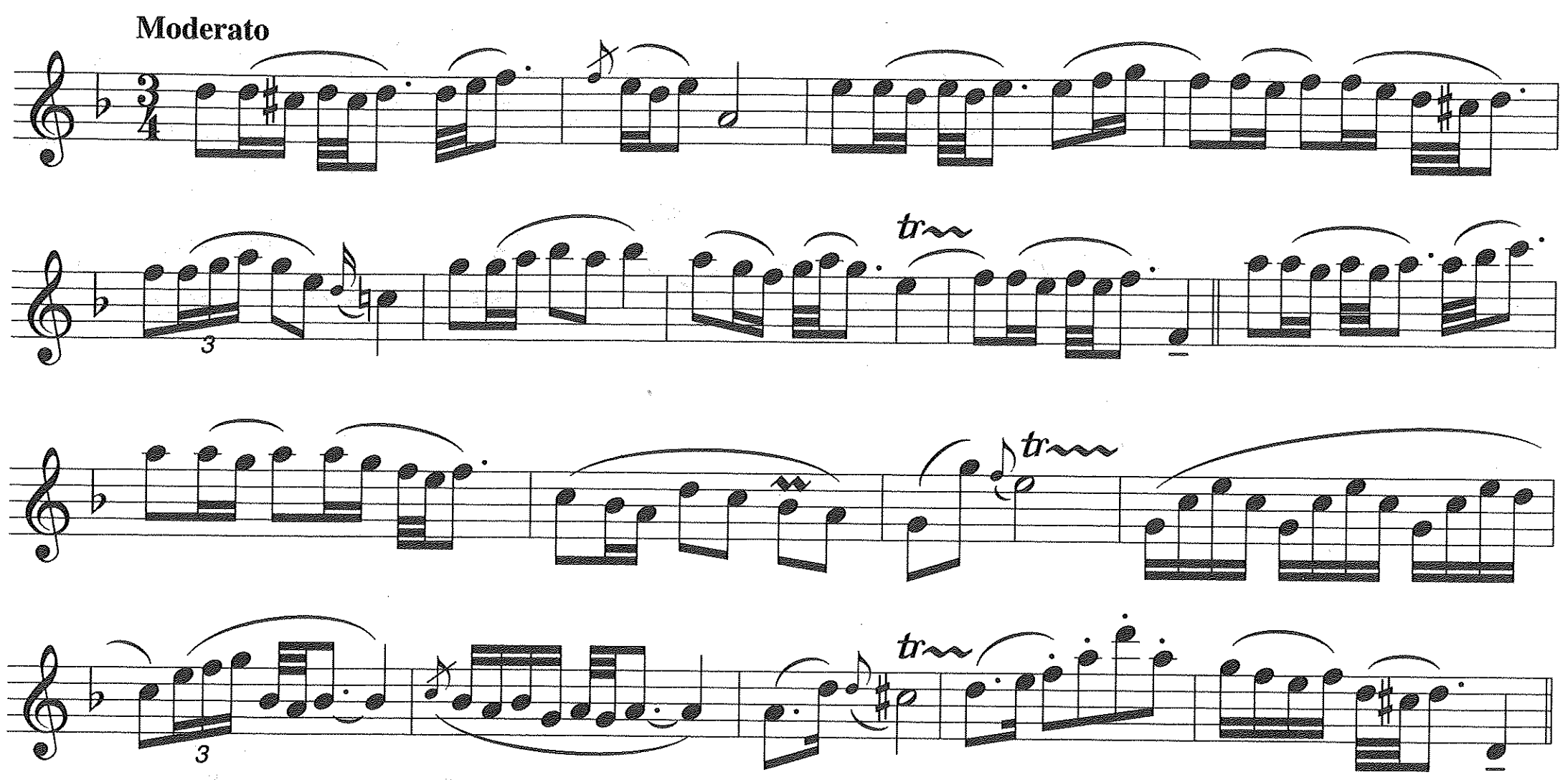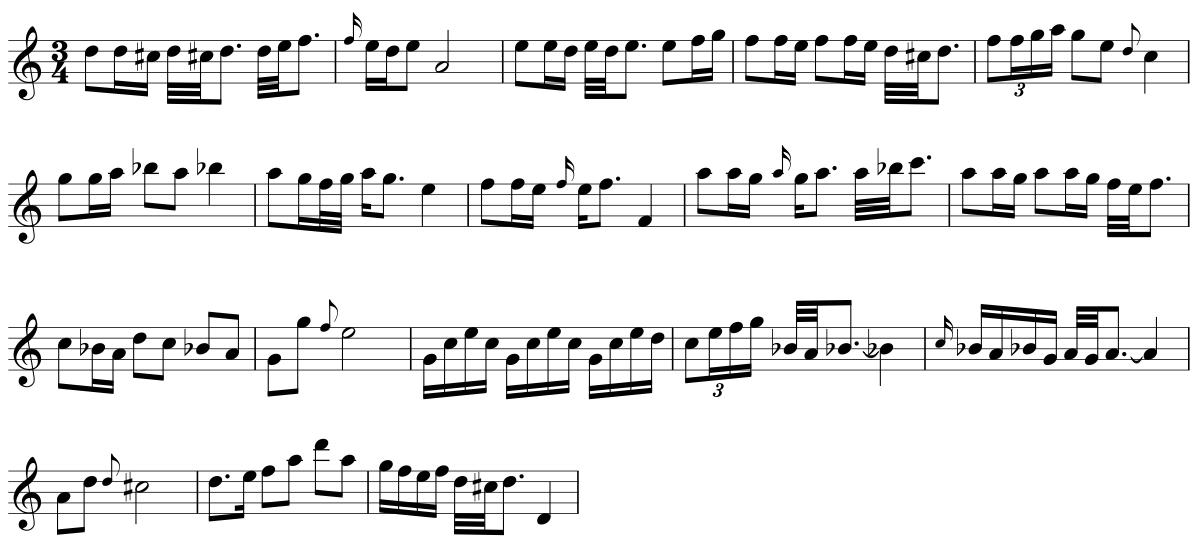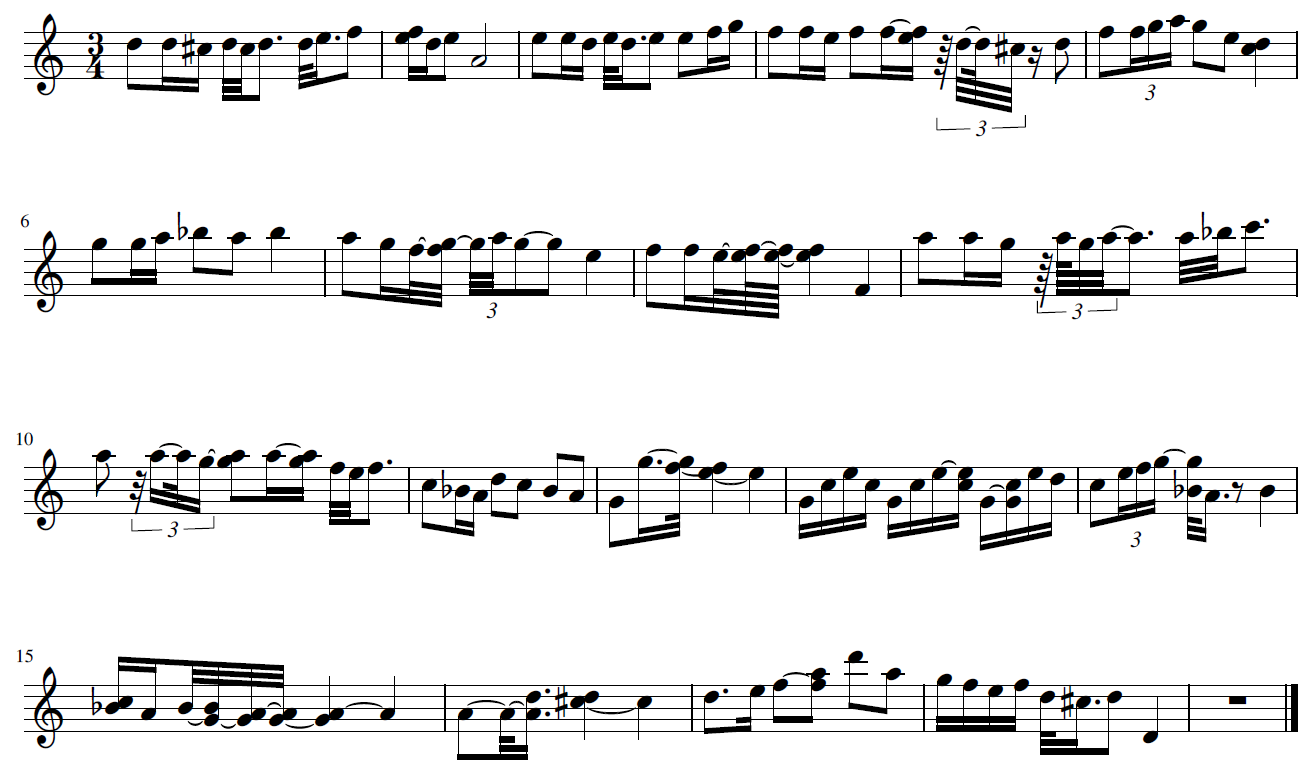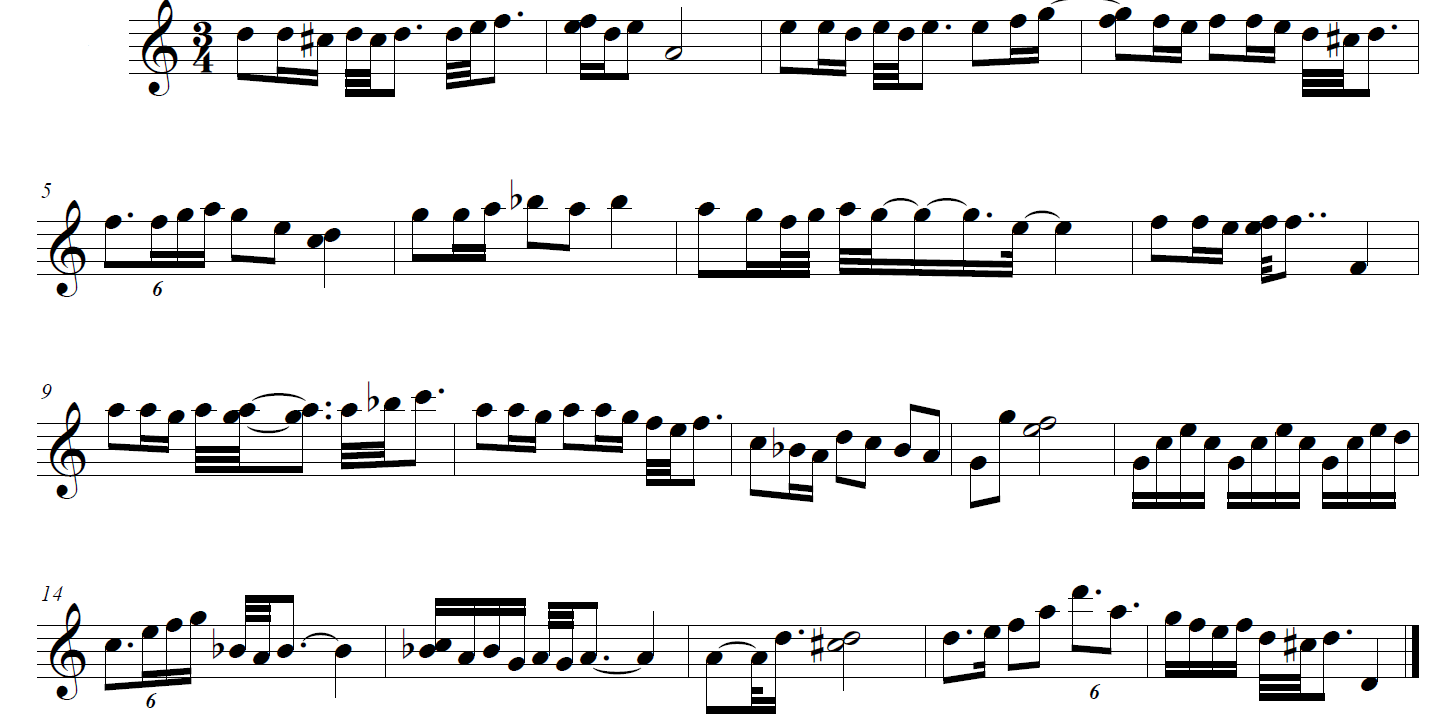Examples
Table of contents
- J.S. Bach, Polonaise from Notenbüchlein für Anna Magdalena Bach
- D.F. Kuhlau, Thema from Rossini, Sonatina op.60 n.1
- L.v. Beethoven, Trio for violin, cello and piano, op.70 n.2 (2d mov)
- C. Saint-Saëns, The elephant from Carnaval des animaux
- W.A. Mozart, Duettino Don Giovani and Zerlina from Don Giovani Act I N.7
We present below some examples of transcriptions, by qparse, of monophonic extracts from the classical repertoire. The transcription were obtained with different kind of grammars:
- some grammars build manually with weight values (penalties) chosen arbitrarily, by intuition,
- some other grammars whose weight values have been trained on a corpus.
In both case, the grammars used are generic, and designed for a given number of beats per bar (2 and 3 in the examples below). It is assumed that the time signature is known in these qparse transcriptions process.
For more details about grammar training from corpora, see the following paper:
- Modeling and Learning Rhythm Structure by Francesco Foscarin, Florent Jacquemard and Philippe Rigaux.
For these transcriptions, the time signature and the tempo are assumed known and given. We used qparse with the option to output a MEI file, from which the score is produced using Verovio, after some post-processing to replace some ties by dots.
Some of these extracts have been chosen from a progressive textbook for learning rhythmic notation reading: D’un rythme à l’autre vol. 1-4, Élisabeth Lamarque, Marie-José Goudard, eds Lemoine.
For each example we give below:
- The original score
- One MIDI performance
- The transcription of this performance using qparse, and the grammar used.
and we provide also, for comparison, the transcription obtained when importing the MIDI file using
- MuseScore 3 (version 3.0.5), and/or
- Finale 2014
J.S. Bach, Polonaise from Notenbüchlein für Anna Magdalena Bach
Original score

MIDI file of performance

Transcription of MIDI file with qparse
using this grammar file. The weights are in a cost domain, and have been chosen arbitrarily for 3 beats measures. The time signature and the tempo are given. The score is produced from the MEI output file using Verovio.

Transcription of MIDI file with musescore
with options: 1 single voice and “played by a human and simplify duration” for quantization and smallest note value set to 32nd notes. The time signature and the tempo are given.

Transcription of MIDI file with finale
with options: mixed rhythm and quantization and smallest note value set to 32nd notes. The time signature and the tempo are given.

D.F. Kuhlau, Thema from Rossini, Sonatina op.60 n.1
Original score

MIDI file of performance

Transcription of MIDI file with qparse
using this grammar file. The weights are in a probability domain and have been trained from a corpus - containing the score (highly specific grammar). The time signature and the tempo are given. The score is produced from the mei file using Verovio.
For more details about grammar training from corpora, you may see the following paper: Modeling and Learning Rhythm Structure by Francesco Foscarin, Florent Jacquemard and Philippe Rigaux.

Transcription of MIDI file with musescore
with options: 1 single voice and “played by a human and simplify duration” for quantization and smallest note value set to 16th notes. The time signature and the tempo are given.

Transcription of MIDI file with Finale
with options: mixed rhythm and quantization and smallest note value set to 16th notes. The time signature and the tempo are given.

L.v. Beethoven, Trio for violin, cello and piano, op.70 n.2 (2d mov)
Original score

MIDI file of performance

Transcription of MIDI file with qparse
using this grammar file. The weights are in a probability domain and have been trained from a corpus - containing the score (highly specific grammar). The time signature and the tempo are given. The score is produced from the MEI output file using Verovio.

Transcription of MIDI file with musescore
with options: 1 single voice and “played by a human and simplify duration” for quantization and smallest note value set to 16th notes. The time signature and the tempo are given.

Transcription of MIDI file with Finale
with options: mixed rhythm and quantization and smallest note value set to 32nd notes (this is necessary in Finale to use 32nd triplets). The time signature and the tempo are given.

C. Saint-Saëns, The elephant from Carnaval des animaux
This easy extract was recored in a tone that differs from the original score (G instead of Bb). We display the transcription results nevertheless because we are focusing here on rhythm transcription.
Original score

MIDI file of performance
It was recorded laboriously by a non-pianist on that small MIDI keyboard.
[comment]: <> 
Transcription of MIDI file with qparse
using the same grammar file as for the above Bach Polonaise (weights are costs, chosen arbitrarily for 3 beats measures). The time signature and the tempo are given. The score is produced from the mei file using Verovio.

Transcription of MIDI file with musescore
with options: 1 single voice and “played by a human and simplify duration” for quantization and smallest note value set to 16th notes. The time signature and the tempo are given.

W.A. Mozart, Duettino Don Giovani and Zerlina from Don Giovani Act I N.7
Original score

MIDI file of performance
[comment]: <> 
Transcription of MIDI file with qparse
using this grammar file, with weight values in a cost model, chosen arbitrarily for 2 beat measures. The time signature and the tempo are given. The score is produced from the mei file using Verovio.

Transcription of MIDI file with musescore
with options: 1 single voice and “played by a human and simplify duration” for quantization and smallest note value set to 16th notes. The time signature and the tempo are given.
